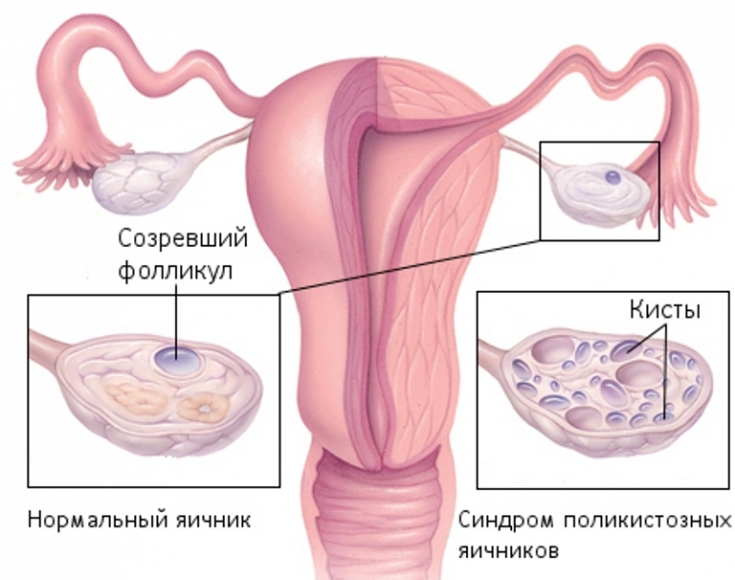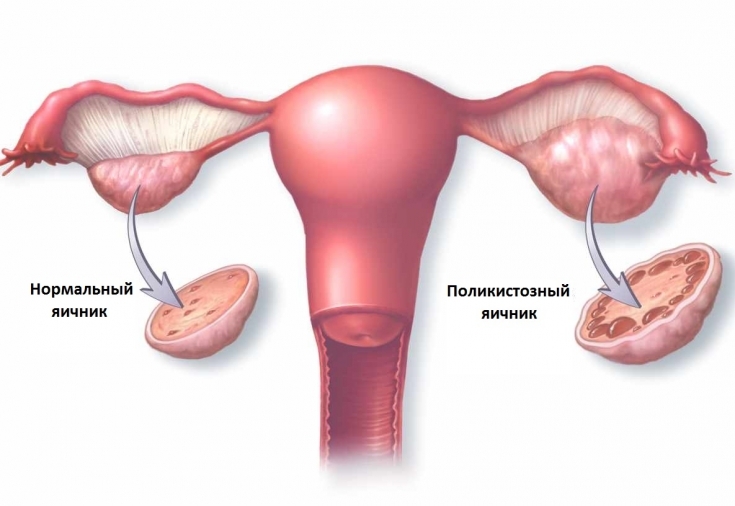According to official statistics, about 5-15% of women of reproductive age have polycystic ovary syndrome.
This condition is associated with a high risk of developing comorbidities, including uterine cancer, type 2 diabetes, and hypertension.
Polycystic ovary syndrome may be the main cause of acne. For more information about what somatic pathologies and neoplasms can develop against the background of polycystic ovary syndrome, read on estet-portal.com in this article.
Polycystic ovary syndrome: current diagnostic criteria
Diagnosis "Polycystic Ovary Syndrome" established on the basis of clinical and laboratory data supporting this pathology.
These include:
1. anovulation characterized by menstrual irregularities;
2. signs of hyperandrogenism: male pattern hair or increase in serum testosterone level above 2.7 nmol/l;
3. polycystic ovarian morphology, confirmed by ultrasound (the presence of 25 or more follicles in each ovary with a diameter of 2-9 mm, and / or an increase in ovarian volume greater than 10 ml).
Follow us on Telegram
At least two of the three criteria listed above must be present in order for a woman to be diagnosed with Polycystic Ovary Syndrome.

Polycystic ovary syndrome: what is the danger of hormonal imbalance
Polycystic ovary syndrome is associated with prolonged estrogenic activity against the background of a lack of activity of luteal hormones. Prolonged exposure to high levels of estrogen on the endometrium of the uterus leads to its hyperplasia and, as a result, increases the risk of developing neoplasms.
The risk of developing uterine cancer is 5 times higher in women with polycystic ovary syndrome.
At the same time, there is no evidence of an association between PCOS and breast cancer, as well as ovarian cancer.
Hormonal acne in women: an effective solution to the problem
Polycystic ovary syndrome increases the risk of diabetes
Typical clinical manifestations of polycystic ovary syndrome are hirsutism and irregular menstruation.
Up to 70% of women with PCOS are overweight, which is often associated with insulin resistance and lipid disorders.
It has been proven that the presence of polycystic ovary syndrome increases the risk of developing type 2 diabetes 5 times, 3 times – arterial hypertension, 2 times – venous thrombosis and stroke.
At the same time, there are no convincing data regarding the relationship between the development of coronary heart disease and polycystic ovary syndrome.
How obesity affects the development of polycystic ovary syndrome

Polycystic Ovary Syndrome: Required Additional Research
Women with PCOS should be screened for other conditions that are often associated with the condition.
Screening includes:
1. Blood glucose test;
2. Lipidogram;
3. Blood pressure measurement;
If the patient with PCOS is also overweight or obese, a glucose tolerance test is mandatory.
Thus, polycystic ovary syndrome – is a disease characterized by a high risk of developing metabolic disorders and neoplasms.
In order to exclude possible comorbidities that have developed against a background of hormonal imbalance, the patient should undergo the above screening.
Thank you for staying with estet-portal.com. Read other interesting articles in the "Gynecology" section. You may also be interested in: The most important information about polycystic ovary syndrome









Add a comment